4/23/2015· Failure Analysis
Weld Failure Analysis: Chair Failure Due to Inadequate Weld
By: Dr. Thomas Read
Read Consulting was asked to determine why a welded chair failed and caused injury to the person sitting in it.
By: Dr. Thomas Read
Tel: (707) 544-2374
Email Dr. Read
Read Consulting Failure Analysis Laboratory was engaged to determine the cause of failure of two titanium surgical screws used in corrective back surgery. These were both 6.5 mm diameter, 40mm long screws that were surgically implanted. in a patient, and they subsequently failed.
Both screws were made from titanium, aluminum, vanadium alloy. In addition, both failures are attributed to bending fatigue that initiated at the screw’s minor diameter (i.e. at the thread root). One failure initiated at what appears to be a “machining” or “turning” mark on the minor diameter. The other failure initiated at a very similar location, but there is no visible machining mark. In either case, the fatigue cracks started at a stress riser.
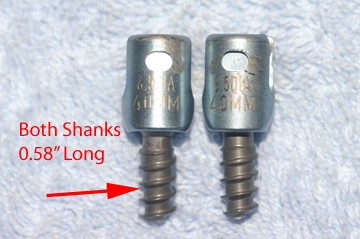
Figure #1: Photograph of the two failed screws.
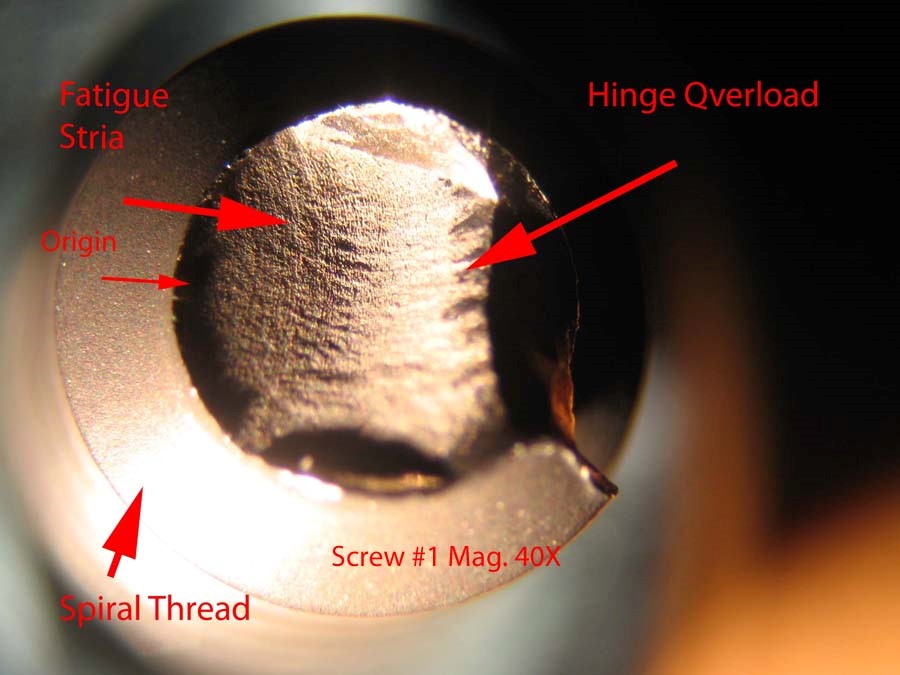
Figure #2: Photomicrograph of the fracture surface on screw #1. This fatigue crack appears to have started at the �root� of the thread.
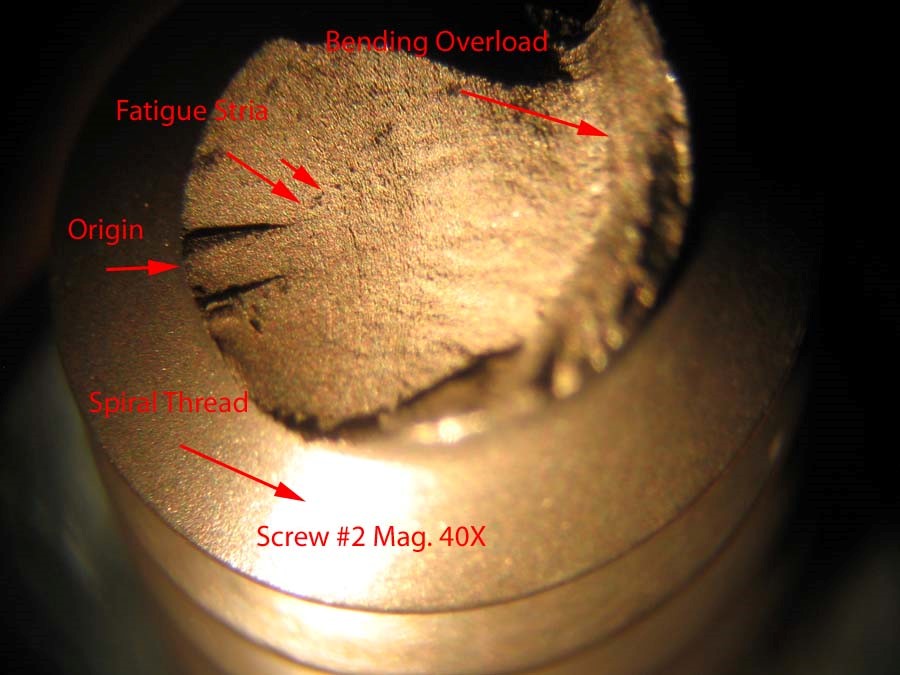
Figure #3: Photomicrograph of the fracture surface on screw #2. This fatigue crack appears to have started at a machining mark in the root of the thread.
Figure #2: Photomicrograph of the fracture surface on screw #1. This fatigue crack appears to have started at the �root� of the thread.
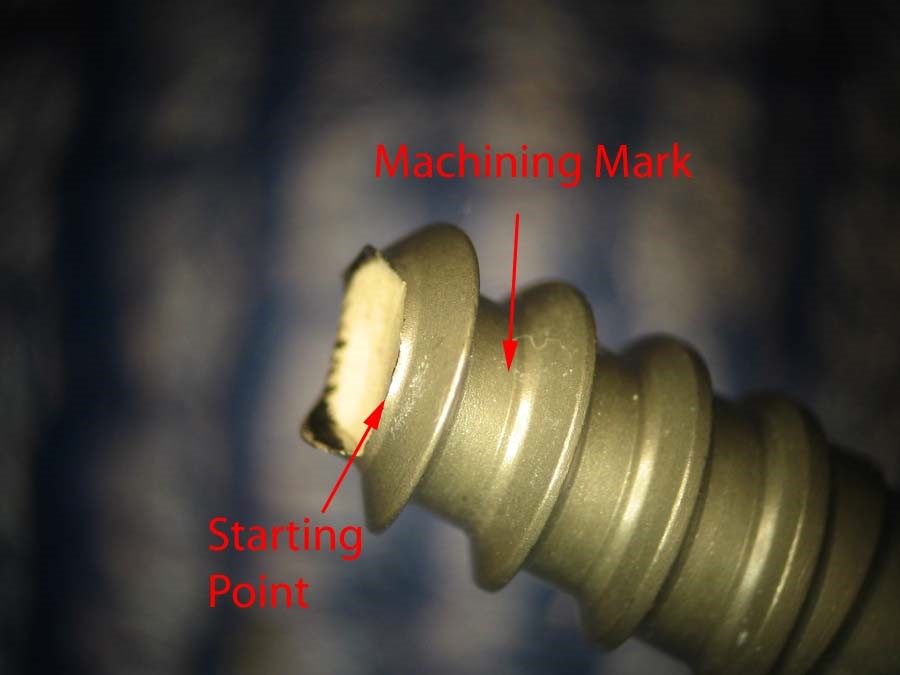
Figure #4: Photomicrograph side view of screw #2. This fatigue crack appears to have started at a machining mark in the "root" of the thread.
Dr. Thomas L. Read, CEO of Read Consulting received his PhD. from Stanford University in 1972. He has over 25 years of manufacturing experience in electronics, metallurgy, factory safety, failure analysis, glass fracture, glass failure and bottle failure. As a member of the electronics industry, Dr. Read has earned process patents and has an extensive background in manufacturing techniques. In parallel, he has spent over twenty five years as a consultant to attorneys and engineers in the areas of failure analysis, metallurgy, glass fracture, glass failure, bottle failure, factory safety, manufacturing problems, intellectual property and patent disputes.
©Copyright - All Rights Reserved
DO NOT REPRODUCE WITHOUT WRITTEN PERMISSION BY AUTHOR.
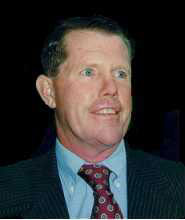
4/23/2015· Failure Analysis
Weld Failure Analysis: Chair Failure Due to Inadequate Weld
By: Dr. Thomas Read
Read Consulting was asked to determine why a welded chair failed and caused injury to the person sitting in it.

4/20/2022· Failure Analysis
Glass Coffee Pot Failure Analysis: Thermal Shock Failure Of Borosilicate Glass Coffee Carafe
By: Dr. Thomas Read
The fatigue failure initiated on the outside bottom where the carafe had been scratched with the abrasive scrub pad. As a result of cyclical thermal shock (between 195°C and 15°C), the cracks grew progressively till it reached a critical length. Glass thickness at the origins is approximately 3 mm. One failed after 12.

5/21/2012· Failure Analysis
Failure Analysis: Product Liability & Personal Injury Involving a Broken Grinding Wheel
By: Dr. Thomas Read
This grinding wheel was part of a product liability and personnel injury case. It was claimed that the subject wheel had unexpectedly failed (i.e. flown apart) and an escaping piece had hit the plaintiff in the face causing serious injuries. According to the user, the grinder with the wheel was purchased approximately one hour before the grinding wheel failure.




